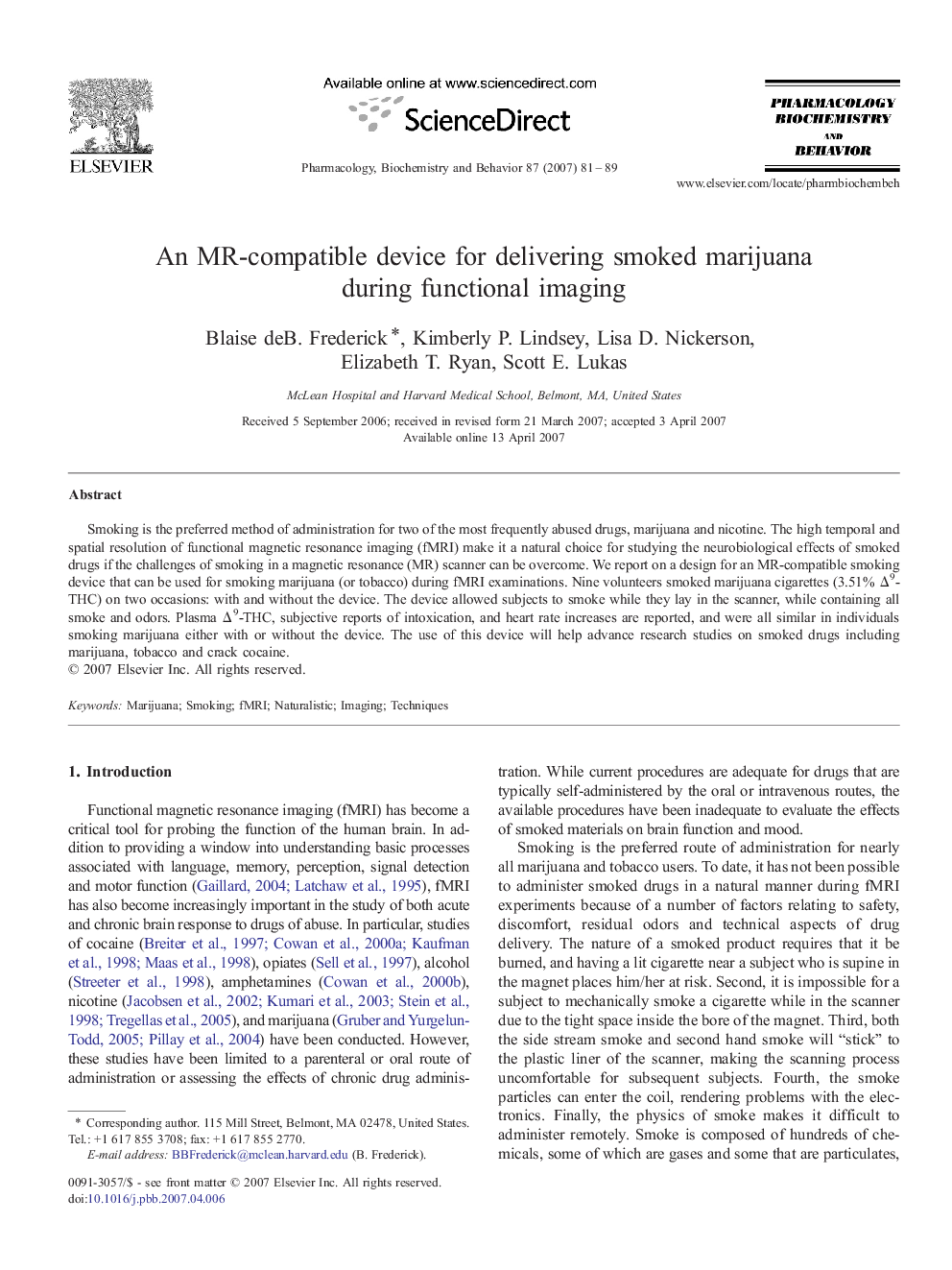| Article ID | Journal | Published Year | Pages | File Type |
|---|---|---|---|---|
| 2014345 | Pharmacology Biochemistry and Behavior | 2007 | 9 Pages |
Abstract
Smoking is the preferred method of administration for two of the most frequently abused drugs, marijuana and nicotine. The high temporal and spatial resolution of functional magnetic resonance imaging (fMRI) make it a natural choice for studying the neurobiological effects of smoked drugs if the challenges of smoking in a magnetic resonance (MR) scanner can be overcome. We report on a design for an MR-compatible smoking device that can be used for smoking marijuana (or tobacco) during fMRI examinations. Nine volunteers smoked marijuana cigarettes (3.51% Î9-THC) on two occasions: with and without the device. The device allowed subjects to smoke while they lay in the scanner, while containing all smoke and odors. Plasma Î9-THC, subjective reports of intoxication, and heart rate increases are reported, and were all similar in individuals smoking marijuana either with or without the device. The use of this device will help advance research studies on smoked drugs including marijuana, tobacco and crack cocaine.
Related Topics
Life Sciences
Biochemistry, Genetics and Molecular Biology
Biochemistry
Authors
Blaise deB. Frederick, Kimberly P. Lindsey, Lisa D. Nickerson, Elizabeth T. Ryan, Scott E. Lukas,
